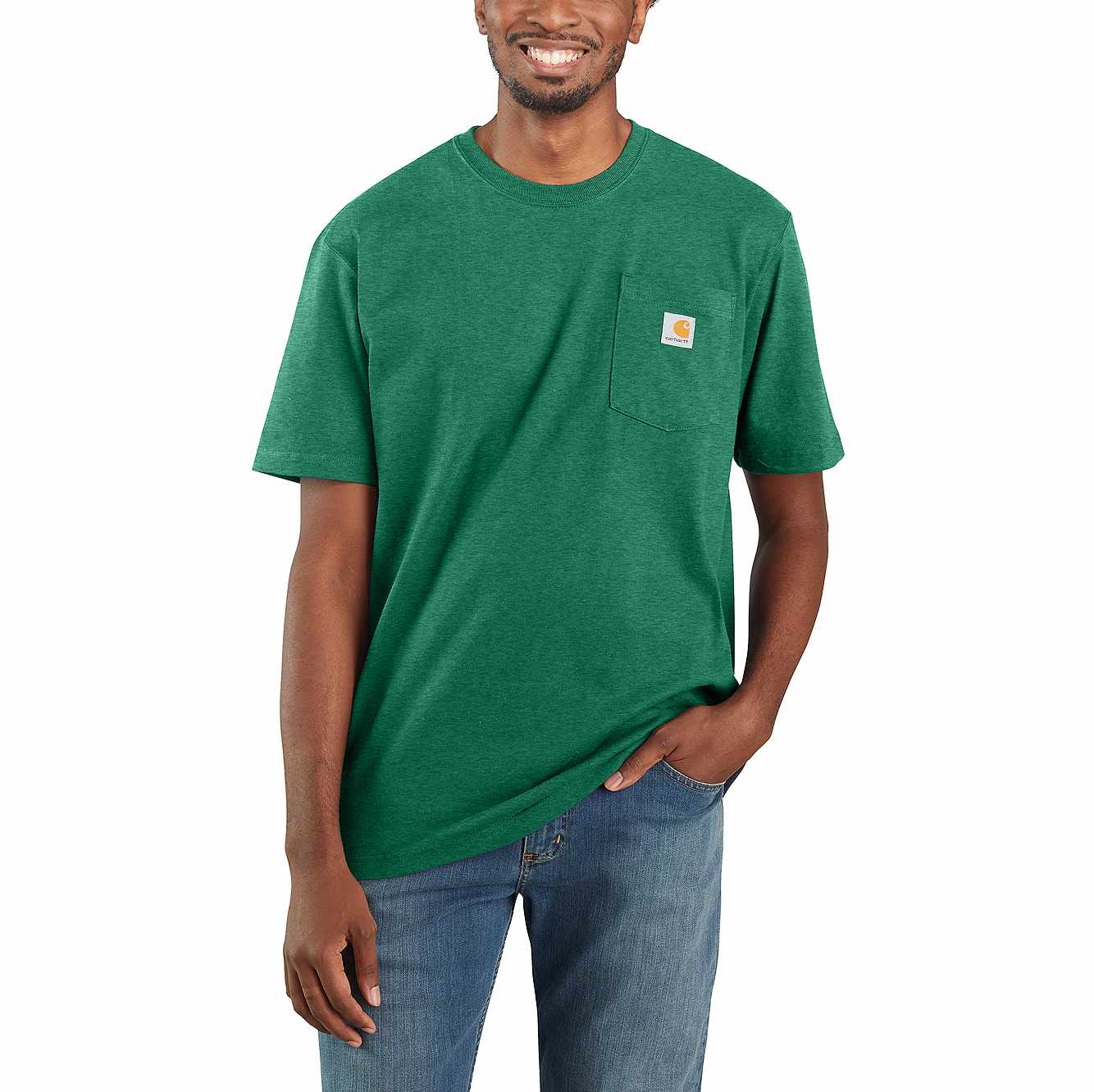Men’s Loose Fit Heavyweight Short-Sleeve Pocket T-Shirt
All colors are 100% cotton jersey knit unless specified differently below. Heather Gray 90% cotton/10% polyester. Snow Heathers: 57% cotton/43% polyester.
Our pocket t-shirt debuted in 1992, and its rugged cotton design and clean looks made it a fast favorite among the hard-working folks who pulled it on. Though decades and trends have come and gone, there’s a reason the K87 remains a classic. This men’s t-shirt is made with heavyweight cotton built to handle tough days on the job. It has an loose fit that gives you room to move and a soft feel that only gets better with time.
- All colors are 100% cotton jersey knit unless specified differently below
- Heather Gray 90% cotton/10% polyester
- Snow Heathers: 57% cotton/43% polyester
- Carbon Heather, Dark Cobalt Blue Heather, Oiled Walnut Heather, Blush Pink Heather, Tourmaline Heather, Ginger Heather, Light Cobalt Heather, and North Woods Heather are 60% cotton/40% polyester
- Rib-knit crewneck holds its shape throughout the workday
- Side-seam construction minimizes twisting
- Left-chest pocket with sewn-on Carhartt patch
- Tagless neck label for a smooth feel
- Model Height: 6’2″; Chest Size: 40.5″; Wearing size M
- Imported






by Steve
THESE SHIRTS FIT GREAT, LIKE ALL CARHARTT SHIRTS DO. COLORS ARE EXACTLY AS ADVERTISED. THE SHIPPING IS FAST AS WELL
by Daniel
LOVE THESE T SHIRTS! I’VE ORDERED A COUPLE OF THEM RECENTLY AND CAME BACK FOR MORE! THEY’RE DEFINITELY A LOOSE FIT SO ORDER A COUPLE SIZES DOWN IF YOU’RE A FEMALE.
by Alex
I WEAR AND WASH THIS WORK TSHIRT WEEKLY AND IT HAS HELD UP FOR ALMOST 2 YEARS. I HAVE SEVERAL AND LOVE THE WAY THEY DO NOT STRETCH OUT OR SHRINK.